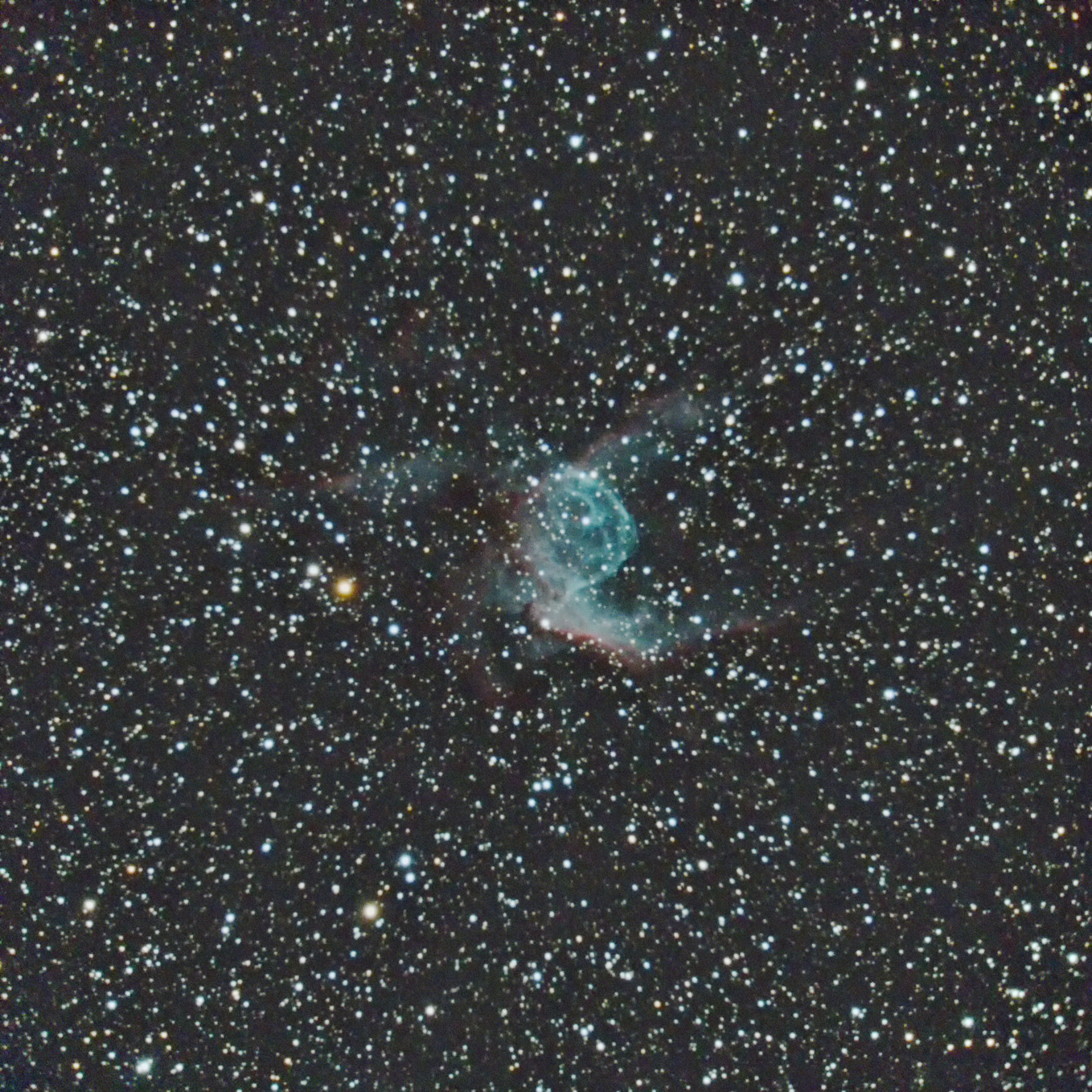| NGC2359 / Diffused Nebula, type 2 E |
|---|
| R.A. | 07h 18m 35.9s (2000.0) |
|---|
| Dec. | -13° 12' 00" (2000.0) |
|---|
| Apparent Size | 8.0' |
|---|
| Real Size | 100 light yrs. |
|---|
| Magnitude | - |
|---|
| Distance | 16300 light yrs. |
|---|
| Other IDs | LBN1041, Gum4 |
|---|
NGC2359 is a small diffused nebula lying about 9 degrees northeast of Sirius.
The nebula has a small size of about 10 arc minutes in span, a dimmed shape can be detected by naked eyes through telescopes.
Some observers call the nebula "Duck Nebula" from its figure.
The nebula consists of two parts of north and south ones, a vast and indistinct northern part forms a head of duck and a deep southern region forms a bill.
NGC2359 contains a special star of "Wolf-Rayet star".
Only 300 are discovered in the all celestial sphere until now.
It's considered that massive stellar atmosphere is spread out in high velocity, and many emission lines can be observed in its spectrograms.
⇒ Display the spectral profile of Wolf-Rayet star WR7 (in new window)
|


